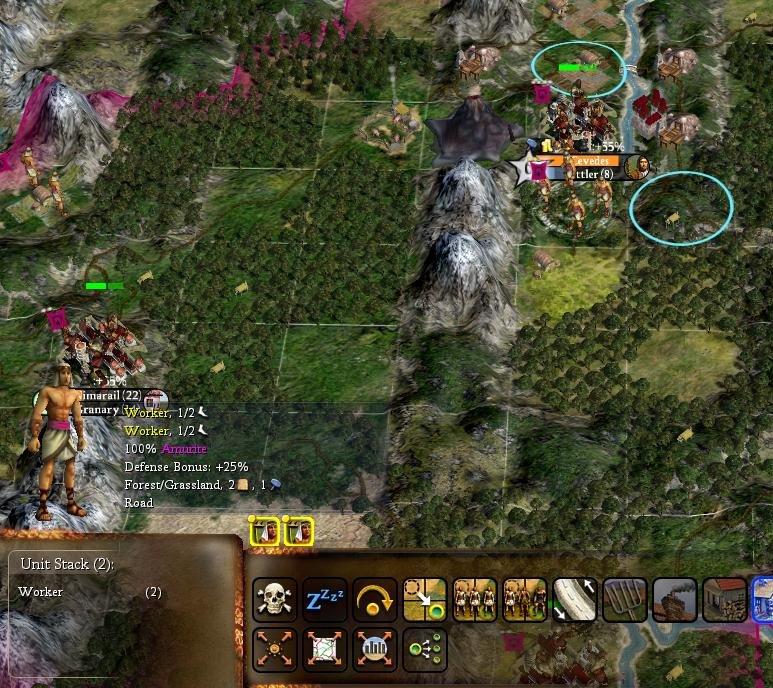Afterburner
Warlord
- Joined
- Mar 13, 2005
- Messages
- 140
In regular Civ4, cities spread irrigation once you get the tech (Civil Service) that lets farms spread irrigation.
In my first game of FFH2 to make it all the way to the endgame, I played Grigori. I started with v0.40, Patch "m", and switched to Patch "n" midway through the game.
As you can see from the screenshot below, cities spread irrigation once you research the proper tech (Construction):

Note that there are no other farms around the circled farm, nor are there any other sources of freshwater. The freshwater comes from the city.
Now I'm playing under Patch "o". I started a new game as the Amurites. This time, I can't use cities to spread irrigation:

Note that my workers are on Forest/Grassland. Note that they're standing next to the city. Note that they are not given the option to make a farm. I have researched Construction, which should give me the ability to let farms (and cities) spread irrigation. I have also researched Mining, which would let me chop down the forest (as you can see by the fact that I could build a cottage if I wanted to).
So is this a bug? A feature? Or have I just missed some small nuance in the game thus far, and this is perfectly normal behavior?
In my first game of FFH2 to make it all the way to the endgame, I played Grigori. I started with v0.40, Patch "m", and switched to Patch "n" midway through the game.
As you can see from the screenshot below, cities spread irrigation once you research the proper tech (Construction):
Note that there are no other farms around the circled farm, nor are there any other sources of freshwater. The freshwater comes from the city.
Now I'm playing under Patch "o". I started a new game as the Amurites. This time, I can't use cities to spread irrigation:
Note that my workers are on Forest/Grassland. Note that they're standing next to the city. Note that they are not given the option to make a farm. I have researched Construction, which should give me the ability to let farms (and cities) spread irrigation. I have also researched Mining, which would let me chop down the forest (as you can see by the fact that I could build a cottage if I wanted to).
So is this a bug? A feature? Or have I just missed some small nuance in the game thus far, and this is perfectly normal behavior?



